Poster Presentations:
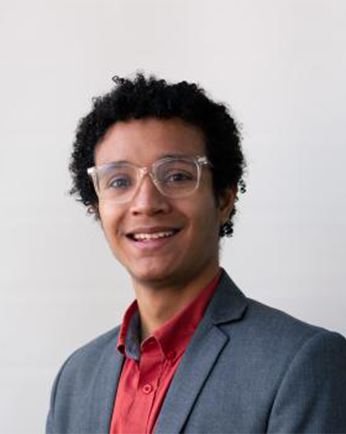
PhD Student
Stanford University
Presentation Title: Accelerating Finite-Element Structural Elastic Dynamic Analysis Using GPU Computing
Co-Authors: Barbara Simpson; Minjie Zhu; Michael H. Scott
Abstract: The demand for high-performance computing has driven a shift towards massive parallelism with graphics processing units (GPUs) across scientific disciplines like machine learning, robotics, quantum chemistry, and more. In earthquake engineering, artificial intelligence and data-driven methods that leverage GPU computing are gaining traction for regional seismic risk analysis. However, adapting finite-element analysis (FEA) for civil structures to a GPU-accelerated framework faces challenges due to unique factors such as diverse element formulations, nonlinearities, coupled equations of motion, implicit integration schemes, and direct solvers. This study explores these challenges and proposes solutions to fully accelerate dynamic analysis of civil structural issues. A GPU-based platform was developed for linear-elastic dynamic analyses, achieving a 115x speedup over an equivalent single-CPU-driven analysis for 10^6 model degrees of freedom. Massive parallelism in the GPU enabled simultaneous operations on each node and element, accommodating finer mesh discretization without notable GPU runtime increase. This mesh-discretization independence showcases potential for more complex and realistic dynamic analyses. Furthermore, GPU-accelerated FEA can enhance machine learning integration in natural hazards research by hosting training analyses and machine learning algorithms on the GPU.

PhD Student
University of California, Berkeley
Presentation Title: Complexity profile as a global metric for multiscale collective behaviors of civil systems
Co-Author: Ziqi Wang
Abstract: Networked civil systems behave similarly to many-body systems with complex coupling effects. Their performance and functionality can demonstrate complex behaviors at a range of scales. Macroscopic behavior patterns can emerge from the interactions of microscopic components. Collective behavior, a concept stemming from statistical physics, can be leveraged to examine a community’s well-being under the threats of hazards. To quantitatively describe the multiscale collective behaviors, we first need to construct a versatile and unbiased joint probability distribution for the states of community networks. To this end, we propose using the maximum entropy model. Provided with the current state of knowledge, the model is the ``most unbiased'' representation of the performances of infrastructures. We then propose using complexity profile, derived from multiscale entropy, as a system-level metric to measure the multiscale collective behaviors. To demonstrate the proposed method, we investigate the complexity profile of a community network under earthquakes.
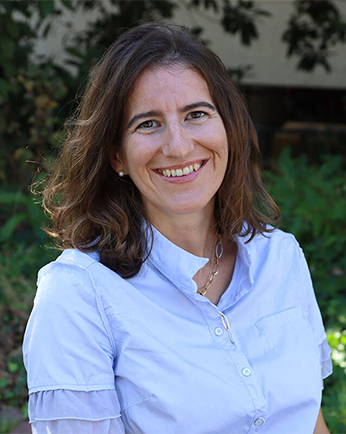
Assistant Professor
San Diego State University
Presentation Title: Assessing Hazards Risk in San Diego with R2D
Co-Authors: Mohammad Rezaei; Renata Archetti; Vittorio Di Federico; Jinyan Zhao; Aakash Bangalore Satish
Abstract: As seismic active coastal regions in the US face increasing risks from ground shaking, sea-level rise and extreme weather events, a comprehensive assessment of risk is critical to allow informed decision-making and disaster preparedness. To this end, several numerical tools have been developed recently; amongst these, the Regional Resilience Determination (R2D) provides a robust analytical framework for modeling the complex interplay of factors influencing natural hazards, potentially integrating socioeconomic data to estimate damage and losses to infrastructure and communities.
This work presents an application of R2D to simulate the impact of a series of hazards, e.g., ground shaking and tsunami, and related losses in the coastal community of San Diego. Although tsunami risk in San Diego is low, the plain, low-lying areas of San Diego adjacent to water, e.g., the Midway area and Coronado Cays and Silver Strand, represent an ideal testbed for damage and loss assessments to ground shaking and water inundation hazards. The building asset information of selected communities within San Diego is collected from a local database and supplemented with an innovative AI-enabled tool, BRAILS: Building Recognition Using Artificial Intelligence at Large Scale.
The results of this study offer valuable insights into the risks associated with natural hazards in San Diego, highlighting the importance of proactive planning and resilience-building. They also showcase the versatility of R2D as a decision-support tool, capable of assessing local challenges posed by natural hazards in the face of a changing climate and informing decision-makers on adaptation and mitigation strategies.

PhD Student
Stanford University
Presentation Title: Machine learning-based optimization framework to support recovery-based design
Co-Authors: Rodrigo Silva-Lopez; Jack W. Baker; Henry V. Burton
Abstract: A study by FEMA suggests that 20-40% modern code-conforming buildings in the United States would be unfit for re-occupancy following a major earthquake (taking months or years to repair) and 15-20% would be rendered irreparable. To address this gap, recovery-based design has been proposed to link building-level engineering with broader community resilience goals. However, the relationship between above-code design improvements and recovery performance is highly nonlinear and varies on a building-and site-specific basis, presenting a challenge to engineers, code developers, and policymakers. Furthermore, downtime simulations (e.g., FEMA P-58 + ATC-138) are computationally expensive and hinder exploration of the full design space. This presentation describes a framework to rapidly identify optimal above-code design improvements to achieve building-specific recovery objectives. The framework leverages surrogate models to allow for computationally efficient probing of recovery performance under a range of user-defined improvements, and optimization techniques that can be repeated for different stakeholder priorities. Using a simple case study, the presentation illustrates how SimCenter applications (e.g., Pelicun) can be coupled with surrogate modeling methods to enable rapid optimization across a large design space, and in the process, unveil new design insights that can support recovery-based design on a building-specific basis.
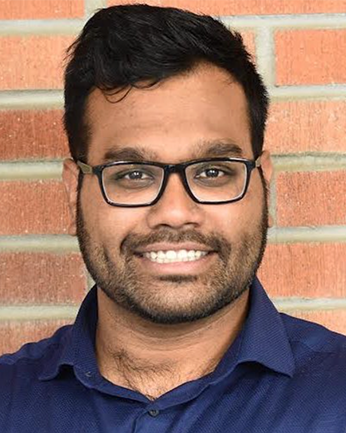
Postdoctoral Researcher
University of California, Los Angeles
Presentation Title: Integrating Equity into Probabilistic Seismic Risk Assessment and Retrofitting Strategies for the Los Angeles Hillside Transportation Network
Co-Authors: Sven Malama; Sriram Narasimhan; Ertugrul Taciroglu
Abstract: Assessing seismic risk in transportation networks is crucial for public safety and infrastructure resilience in earthquake-prone regions. Equity considerations in risk assessment are vital to address disparities in vulnerability and ensure that mitigation strategies provide fair protection to all socioeconomic groups. This study introduces a deep learning-based framework integrating the concept of "welfare" into seismic risk assessment, focusing on the Los Angeles Hillside Areas susceptible to earthquake-induced road and slope failure. The framework includes earthquake scenarios generation from a seismic source model, simulating potential hillside road failures, and evaluating the impact on system-wide network performance. Equity awareness is infused by including welfare loss, calculated using publicly available data: origin-destination matrices, commuters' income levels, and transportation modes. Deep-learning module expedites the computationally intensive traffic simulation process by creating a surrogate model for the transportation network to accurately predict changes in traffic performance and welfare loss across road damage scenarios. This study uncovers quantifiable evidence that lower-income commuters are more likely to face delays and experience welfare losses than higher-income counterparts. Furthermore, the study evaluates road retrofitting and budget allocation strategies, revealing that prioritizing the minimization of drivers’ delays only leads to an equal reduction in delays for all commuters but exacerbates disparities in per-capita welfare loss, particularly between low and high-income commuters. Conversely, retrofitting policy tailored to benefit low-income commuters mitigates welfare loss gaps between income groups. This research underscores the importance of considering commuters' economic status when formulating policies to mitigate the impact of road network disruptions, especially in seismic risk contexts.

Assistant Professor
University of Texas at Tyler
Presentation Title: Seismic Response of Rocking Structures Equipped with Pressurized Sand Dampers Through Real-Time Hybrid Simulations
Co-Authors: Liang Cao; James, Ricles; Nicos, Makris
Abstract: In this study, the application of the newly developed pressurized sand damper (PSD) to rocking structures and its effects were investigated and discussed. A cross-laminated timber (CLT) rocking wall was considered, equipped with PSDs to offer supplemental hysteretic damping. A hybrid approach was followed to investigate the effect of supplemental hysteretic damping on the rocking response of CLT walls. This approach involves the comparison between the results of two numerical models of a CLT wall without supplemental damping (one model with a fixed base and one model of a self-centering rocking wall) with the results of the real-time hybrid simulations (RTHS) of a numerical model of a CLT rocking wall equipped with two physical PSDs. The RTHSs took place in the open-access Natural Hazards Engineering Research Infrastructure (NHERI) Lehigh Experimental Facility.

PhD Student
Oregon State University
Presentation Title: An Application of Physics Informed Recurrent Neural Networks to Structural Dynamics
Co-Authors: Barbara Simpson; Michael Scott
Abstract: Recurrent neural networks (RNNs) are an effective tool for addressing complex problems in structural dynamics. This study employs RNNs to emulate the time integration scheme in the dynamic analysis of a simple single-degree-of-freedom (SDOF) oscillator. Understanding how complex neural networks make decisions can be challenging. Therefore, this study integrates physics-based regularizers, such as the residual arising from the equation of motion, into the training process to enhance the interpretability and robustness of the RNN. The RNN was trained using numerical results generated from OpenSees. Results were compared with and without the physics-based regularizer. Notably, hyper-parameters of the network, data generation for training, and the effect of varying loss functions and data normalization on the RNN's accuracy were discussed. The results show that the RNN was capable of representing the dynamic response of the SDOF system, even extrapolating beyond the training data, provided the RNN architecture, loss, and training data were appropriately selected.
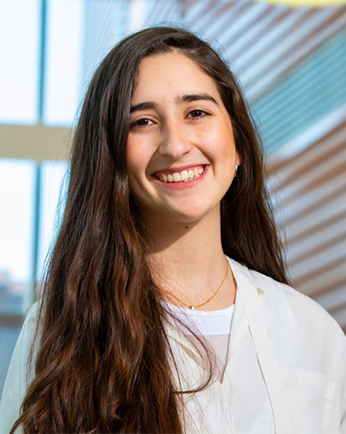
PhD Student
University of California, Berkeley
Presentation Title: Implications of Bearing Rotations in Bridge Performance Using a Hybrid Simulation Experiment
Co-Authors: Mao Cheng; Tracy Becker
Abstract: Typical design and analysis of isolation bearings assume parallel-end plate conditions enforced through rigid elements above and below the isolation layer and, as such, neglect rotations at the bearings. For many bridges, however, the piers are tall, leading to isolation bearings on flexible members and making the parallel end-plate assumptions circumspect. This leads to a need to understand the mechanical behavior of bearing under rotational demands. Previous research has shown that bearing end-plate rotation leads to a reduction in the horizontal stiffness of isolation bearings. This may result in a reduction in bridge performance if rotational demands are present. A hybrid simulation with model updating experiment is conducted to capture the changes in bearing behavior. A numerical model of a major toll bridge top-of-column isolated with lead rubber bearings over varying height piers and susceptible to flexible bearing supports was developed using OpenSees. The experimental subassembly includes one lead rubber bearing subject to axial, shear, and rotational demands. The rest of the bearings are simulated and updated with a phenomenological model within the numerical subassembly. A weighted adaptive constrained unscented Kalman filter was applied as the online model updating algorithm. This project aims to quantify the effect of bearing end-plate rotation and its effect on bridge performance.

Undergraduate Student
California State University, Chico
Presentation Title: Influence of Different Building Damage Prediction Models on Regional-scale Seismic Risk Estimates
Abstract: Natural hazards, such as earthquakes, often impact communities with devastating effects which has influenced engineers to create mathematical models to estimate structural responses. However, there are not many models currently available for regional-scale applications, which are capable of representing different archetypes and features, among the existing models there is a lack of awareness regarding their differences or whether one is considered optimal. The goal of this study is to evaluate two building damage prediction models, namely, the HAZUS and MDOF-Lu models, to understand and inform users how they differ and may influence civil infrastructure seismic risk assessments. This study focuses on generating a scenario of an earthquake rupture along the San Andreas Fault and evaluating the resulting damages of 5000 buildings in the San Francisco Bay Area. The NHERI SimCenter’s Regional Resilience Determination Tool (R2D) is used to simulate both models. The evaluation of these models is based on comparing the outputs of engineering demand parameters, damager measures, and decision variables.

PhD Student
University of Washington
Presentation Title: High-Fidelity Dynamic Analysis of Pile Foundations: A Step-by-Step Procedure with Emphasis on Realistic Modeling and High-Performance Computing
Co-Author: Pedro Arduino
Abstract: In geotechnical engineering, precise analysis of dynamic pile foundations is crucial. This study presents a comprehensive procedure for high-fidelity finite element simulations of pile foundations subjected to seismic events. The approach emphasizes realistic modeling and utilizes high-performance computing for efficiency. The procedure commences by simulating the source rupture, a pivotal step in seismic event replication. Geophysics software, employing methods like green functions, finite elements, or finite difference techniques (e.g., shaker maker, Hercules, or SW4), facilitates the acquisition of site-specific ground motion data. To tackle complexities in near-fault areas with distinct ground motions, the Domain Reduction method (DRM) is employed with high-performance computing. This enables regional-scale earthquake analysis simulations using truncated domains. The seismic source is strategically brought closer to the domain, curbing computational costs. Incorporating Perfectly Matched Layer (PML) elements boosts efficiency by absorbing outgoing waves, eliminating the need for domain extensions. This research focuses on high-fidelity finite element simulations, encompassing 3D foundation analysis and nonlinear soil behavior including liquefaction. This is accomplished using advanced constitutive models, coupled FEM formulations, and a specialized embedded interface element representing pile behavior. In summary, this study seeks to improve dynamic pile foundation analysis through a procedure that combines realistic modeling, advanced constitutive models, and high-performance computing. Innovative techniques like DRM, PML, and embedded interface elements enhance accuracy and efficiency, advancing our grasp of pile foundation seismic response.
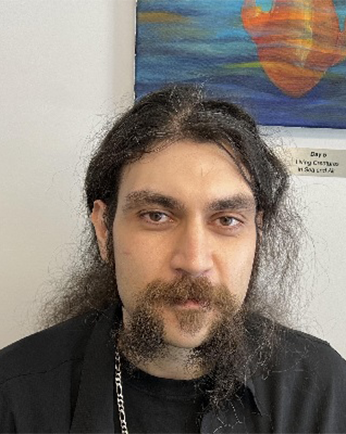
Postdoctoral Researcher
University of California, Los Angeles
Presentation Title: Deep Ensemble Learning for Rapid Large-Scale Post-Earthquake Damage Assessment—Application to 2023 Türkiye Earthquakes Satellite Images
Co-Authors: Mohammad Askari; Rafet Sisman; Rojiar Soleimani; Ertugrul Taciroglu
Abstract: Extensive government damage surveys conducted after the Türkiye earthquake sequence of 2023 have allowed for developing a rapid post-event damage assessment framework using Artificial Intelligence (AI) techniques to overcome typical challenges encountered in rapid regional damage assessment efforts. By manually analyzing satellite images of the city of Antakya, we could identify and segment collapsed or damaged buildings and compare them with government data on various damage states. This data was then used to develop an AI-based framework called RAPID-A, which automates the segmentation and damage assessment processes for other (test) areas. The resulting tool, called RAPID-A, combines multiple deep segmentation models with damage proxy maps to identify collapsed and damaged-but-not-collapsed buildings accurately and efficiently in satellite images. By using image segmentation instead of object detection, RAPID-A provides uncertainty-aware estimates of building damage intensity in the form of Log-Normal distributions. Case studies in Gaziantep and Kahramanmaras show that RAPID-A can replace human experts in image segmentation and classification tasks for rapid regional damage identification for early damage assessment.
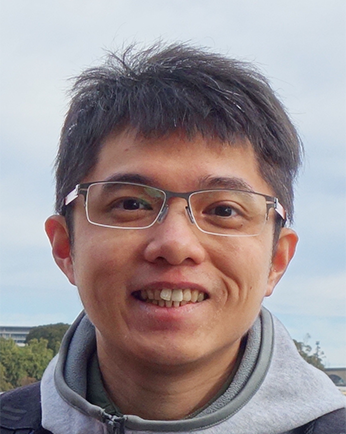
PhD Student
University of California, Los Angeles
Presentation Title: A Rupture to Rafters Workflow incorporating Soil-Structure Interaction: A Case Study in Istanbul
Co-Authors: Wenyang Zhang; Ertugrul Taciroglu
Abstract: In this study, a Hercules simulation was performed with a high-intensity earthquake with Mw=6.81 in Istanbul. With the domain reduction method (DRM) and perfectly matched layer (PML), the responses generated from Hercules are used to compute the effective nodal forces that would apply to a soil-structure interaction (SSI) Abaqus model with a smaller domain. The results show that, with consideration of PML, the effective nodal forces are able to generate responses that are close to the responses generated from Hercules. The effective nodal forces are then used to drive the Abaqus models for the cases with and without soil boxes. It can also be shown that the maximum inter-story drift ratio (MIDR) and peak floor acceleration (PFA) computed with the foundation input motion (FIM) are closer to the complete model results than the ones computed with the free-field motion (FFM), regardless of the consideration of topography. In addition, with the help of the developed Python scripts, the workflow of this study can be easily applied to other cases.
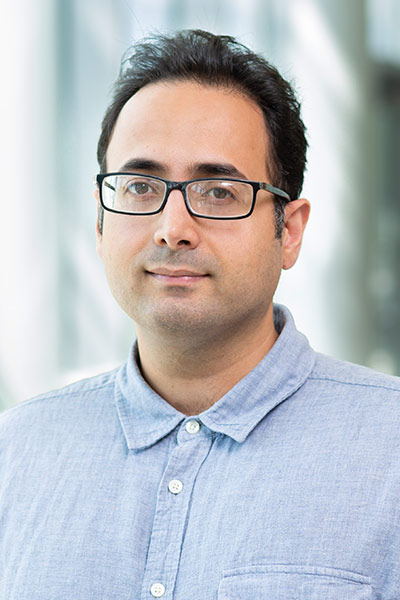
Assistant Professor
Utah State University
Presentation Title: A design-oriented machine learning tool for seismic loss assessment
Abstract: Incorporating performance-based earthquake engineering (PBEE) assessment into standard seismic design procedures will provide unprecedented capabilities to mitigate future earthquakes’ impacts and increase community resiliency. However, implementing PBEE is not straightforward due to its complexity and significant computational expenses of various steps of necessary simulations. Therefore, this study introduces a deep learning (DL)-based approach for accurate and fast prediction of seismic performance of framed regular buildings. The DL model directly calculates PBEE decision variables, such as direct annual repair cost and causality, based on building geometry, lateral-resisting systems characteristics, and construction material properties. The DL model features are selected to be compatible with the level of available information at earlier and later stages of design. The proposed model was trained on an inventory of steel special moment-resisting frames using DesignSafe high-performing computational resources. The best DL model was interpreted using Shapely explainers to extract the implicit relationship between loss and frames’ design. The results indicate the versatility of DL models as computationally inexpensive surrogate models for rapid and accurate PBEE.